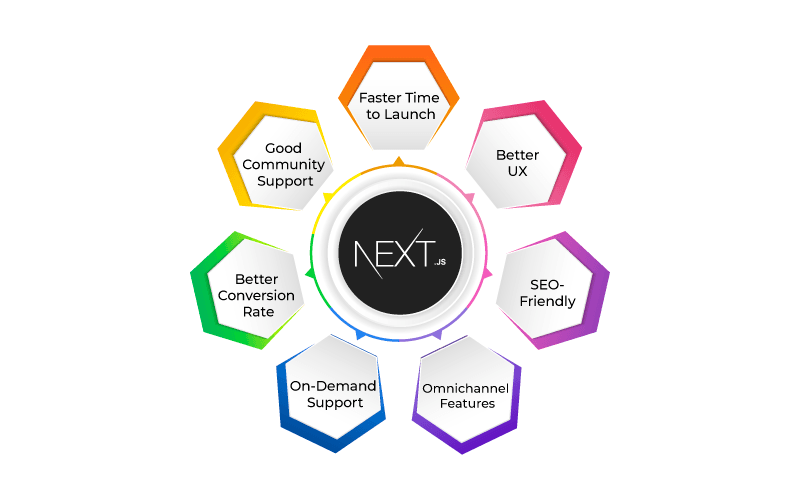Next.js Features Explained: What They Are, How They’re Used, and Why You Need Them
Next.js has taken the web development world by storm, and for good reason. Built on top of React, this powerful framework offers a suite of features that make building fast, scalable, and SEO-friendly applications easier than ever. But what exactly are these Next.js features, what are they used for, and why are they so crucial? In this post, we’ll break down the standout tools Next.js brings to the table, explore their practical uses, and explain why they’re must-haves for modern developers. Whether you’re a beginner or a seasoned coder, let’s dive into the magic of Next.js!
1. Server-Side Rendering (SSR): Speed and SEO Power
What It Is: Server-Side Rendering (SSR) lets Next.js generate HTML on the server for each request before sending it to the browser.
How It’s Used: With SSR, you can fetch dynamic data—like user-specific content or live updates—and render it server-side. Use getServerSideProps to pull data on every request, perfect for pages like dashboards or news feeds.
Why You Need It: SSR boosts initial page load speed by delivering pre-rendered content, which is a game-changer for user experience. Plus, it’s gold for SEO—search engines can crawl fully rendered pages without waiting for client-side JavaScript to kick in. If your app needs real-time data and top rankings, SSR is non-negotiable.

Example: A stock market app uses SSR to display up-to-the-minute prices, ensuring users see fresh data instantly.
2. Static Site Generation (SSG): Lightning-Fast Pages
What It Is: Static Site Generation (SSG) pre-renders pages at build time into static HTML files, served instantly to users.
How It’s Used: Use getStaticProps to fetch data—like blog posts or product listings—during the build process. It’s ideal for content that doesn’t change often, like marketing pages or documentation.
Why You Need It: SSG delivers blazing-fast load times since there’s no server processing per request—just pure HTML. It’s also SEO-friendly and scales effortlessly, making it essential for content-heavy sites aiming for performance and visibility.
Example: A blog uses SSG to pre-render articles, slashing load times and boosting Google rankings.
3. Incremental Static Regeneration (ISR): Best of Both Worlds
What It Is: ISR combines SSG with dynamic updates, letting you regenerate static pages in the background after a set time (e.g., every 60 seconds).
How It’s Used: Add a revalidate key to getStaticProps to refresh content periodically without rebuilding the whole site. Think product pages with occasional stock updates.
Why You Need It: ISR keeps your site fast and static while staying current, avoiding the overhead of SSR for every request. It’s a must for apps needing a balance between performance and fresh data.
Example: An e-commerce site uses ISR to update inventory every minute, keeping pages fast yet accurate.
4. Automatic Code Splitting: Lean and Mean Performance
What It Is: Next.js automatically splits your JavaScript into smaller chunks, loading only what’s needed for each page.
How It’s Used: When a user visits a page, only its specific code loads—no bloated bundles slowing things down. It happens out of the box—no setup required.
Why You Need It: Faster page loads mean happier users and lower bounce rates. For any app where speed matters (spoiler: that’s all of them), this feature is a lifesaver, keeping your codebase efficient.
Example: A multi-page app loads just the homepage script initially, keeping the first visit snappy.
5. File-Based Routing: Simplicity at Its Best
What It Is: Next.js uses a file-based routing system—create a file in the pages (or app) folder, and it becomes a route automatically.
How It’s Used: Drop a about.js file in pages/, and voilà—/about is live. Dynamic routes like [id].js handle variable paths, like blog posts or user profiles.
Why You Need It: It cuts out manual route configuration, speeding up development and reducing errors. For projects needing quick setup or complex routing, this is a time-saving essential
.Example: A portfolio site adds projects/[slug].js for dynamic project pages—no router code needed.
6. API Routes: Backend Made Easy
What It Is: API Routes let you build serverless API endpoints right in your Next.js app, under the pages/api/ folder.
How It’s Used: Create a file like pages/api/hello.js to handle GET, POST, or other requests—perfect for form submissions, data fetching, or third-party integrations.
Why You Need It: No separate backend setup means faster prototyping and deployment. For full-stack apps or MVPs, this feature is critical to streamline development.
Example: A contact form submits data to api/submit.js, processing it server-side without extra infrastructure.
7. Image Optimization: Effortless Media Magic
What It Is: The next/image component automatically optimizes images—resizing, compressing, and serving them in modern formats like WebP.
How It’s Used: Replace <img> tags with <Image> to lazy-load and scale images based on device size, no manual tweaking required.
Why You Need It: Faster load times and reduced bandwidth keep users engaged and improve SEO. For media-rich sites, this is a must-have for performance without the hassle.
Example: A photography site uses <Image> to serve perfectly sized photos instantly.
8. Hot Reloading: Real-Time Development
What It Is: Hot Reloading updates your app in the browser as you edit code, without a full refresh.
How It’s Used: Run npm run dev, tweak a component, and see changes live—ideal for rapid iteration during development.
Why You Need It: It speeds up your workflow, letting you test ideas on the fly. For any developer, this is essential to stay productive and creative.
Example: Adjust a CSS style and watch the layout shift instantly—no restart needed.
Why These Features Make Next.js a Game-Changer
Next.js isn’t just a React framework—it’s a full-stack powerhouse. SSR and SSG tackle SEO and speed, while ISR bridges static and dynamic needs. Code splitting and image optimization keep performance tight, and file-based routing with API routes simplify development. Hot reloading? That’s your productivity booster. Together, these features make Next.js perfect for blogs, e-commerce, dashboards, and more—anything where speed, scalability, and user experience matter.Take Netflix or Nike, for example—they use Next.js to handle massive traffic while keeping pages fast and search-friendly. Whether you’re building a startup MVP or a corporate site, these tools give you an edge.
Final Thoughts: Unlock Next.js’s Full Potential
Next.js features aren’t just bells and whistles—they’re purpose-built to solve real development challenges. From boosting SEO with SSR to slashing load times with SSG and ISR, each tool has a job: making your app faster, friendlier, and easier to build. Need a quick backend? API routes have you covered. Want stunning visuals without lag? Image optimization’s got it.So, why Next.js? Because it hands you everything you need to create modern, high-performing web apps without breaking a sweat. Ready to try it out? Start small, play with these features, and see where they take you. What’s your favorite Next.js trick? Drop it in the comments—I’d love to hear!
